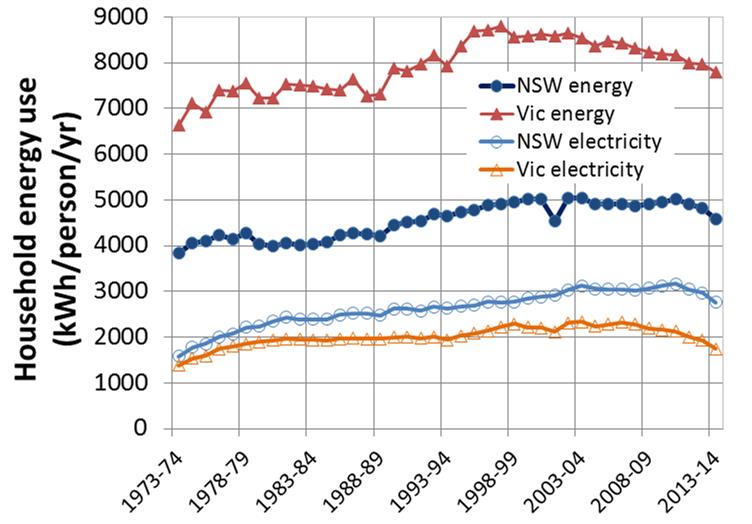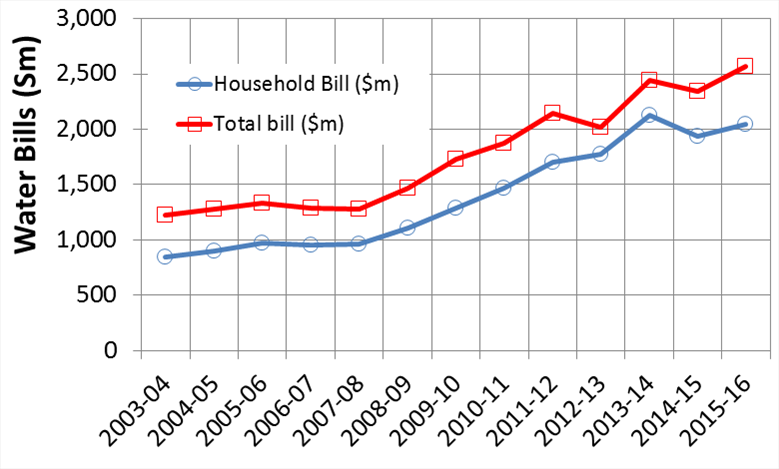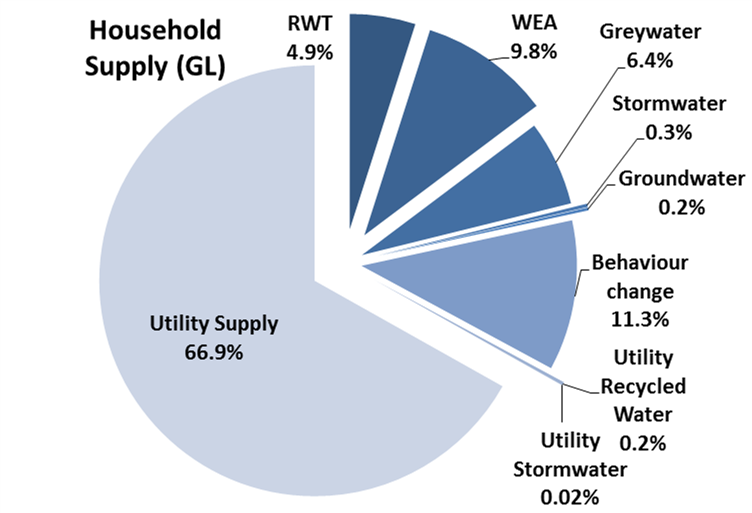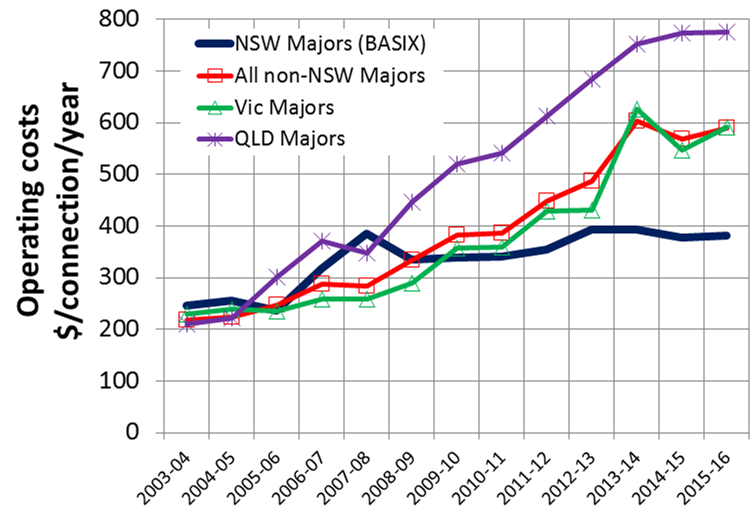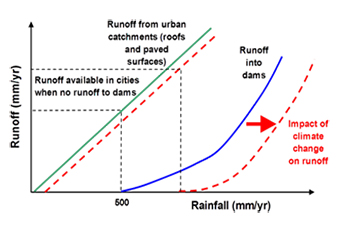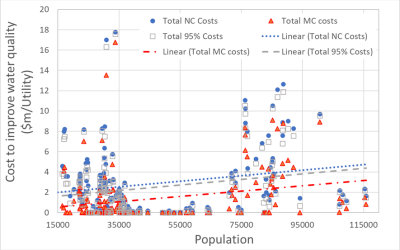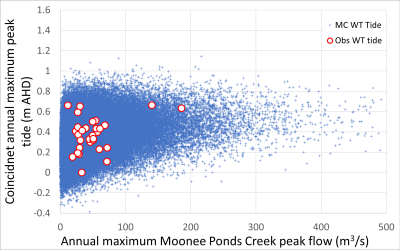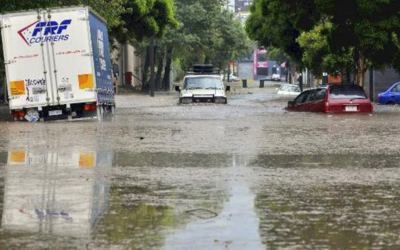An Alternative Water Plan for Greater Melbourne
Urban Water Cycle Solutions partnered with Kingspan and Thirsty Country to create an alternative water plan for Greater Melbourne. We are pleased to provide an overview of phase 1 of the plan in this blog. Also see RHAA Blog
There are three key messages from the Alternative Water Plan.
- The major determinant of Melbourne’s water cycle responses is the behaviour of buildings and particularly residential buildings. Land use planning and building controls impact on household welfare, viability of utilities and urban water use.
- The impact of water service costs on household welfare is affecting the entire economy.
- Regulated building design fundamentally changes how Melbourne uses water and discharges stormwater runoff, with long term net savings to householders, utilities and government.
Figure 1 shows household expenses for water and sewerage services from utilties have increased dramatically (143%), but water use has only increased by 2%. Related research shows households provide a major proportion of utility revenue – increasing from 67% to 74%. Households are a dominant driver of impacts on urban water supplies.
Where does the Plan come from?
Kingspan Environmental has commissioned the plan and is a multinational building company growing rapidly due to trade in renewables, including rainwater harvesting, and energy efficiency.
What is the plan based on?
Values and evidence. The values are fairness, transparency and public benefit. The process of collecting evidence and analysis was overwhelming. Professor Coombes paper on Systems Frameworks with Big Data was recognised as one of the 5 leading research contributions in 2014-15 by Engineers Australia[1]. The research relies on public data sources, ABS, BOM, utility annual reports and regulator reports. The process of scenario evaluation and systems analysis as recently recommended by APRA for prudential management provides an independent analysis of options and system wide costs and benefits[2]. The process underpinning this plan took six months of intensive data analysis.
What did the Research find?
- Household expenditure for water services in Greater Melbourne have risen from $500 per household in 2003/4 to $1,000 per household in 2015/16. Water Utility operating costs per property have increased by up to 199%.
- The water utility impacts on Household Welfare have risen from $1.2 B to $2.5 B which is a 143% increase for only 2% more water use and is relative to growth in CPI of only 38%. This is affecting the entire Victorian economy.
- The Business as Usual Option is projected to increase household expenditure on utility water and sewerage services to over $3 billion annually by 2050.
- The Sustainable Building option will save households $1 billion on expenses for water and sewage services every year after 2035. The water utility impact on household expenditure is projected to fall to $800 per household in real terms.
- The sustainable buildings option provides a net present benefit of $1.15 billion for stormwater management, protection of urban waterways and amenity with urban catchments by reducing
- stormwater runoff volumes by 14% (94 GL/annum);
- nutrient loads discharging to waterways by 17%; and
- risk of flood damage by 5%.
- Sustainable Buildings in NSW currently save 15% of potable water use or 90 GL annually.
- The whole of system cumulative savings for Greater Melbourne from the Sustainable Buildings option, including the costs of upgrading buildings, are $16B by 2050. This is a net present value of $5.75 billion.
What does the Plan recommend?
- The Minister for Planning develop a State Planning Policy for Sustainable Buildings in Victoria incorporating performance-based targets for all new buildings and renovations. The performance-based targets would include water (40% reduction), energy (40% reduction), stormwater runoff (30% reduction in volume) and green infrastructure targets.
- In the interim and prior to June 2018, the Victorian 6 star building requirement should be expanded to ensure rainwater harvesting plus water and energy efficiency on all new developments until a permanent strategy is implemented.
- The Minister for Planning and the Minister for Water request the Department convene a working group, independent of state monopoly interests, for a Systems Approach analysis of Melbourne’s future water challenges and water future options and their impact on household welfare and overall community benefit.
- The Minister for Finance request a review by the ACCC of Victorian water services and pricing mechanisms to explore competitive arrangements that may deliver more efficient service delivery which includes greater competition.
- The Minister for Water amend the Water Act to allow local government to appoint current Councillors to their local Water Authority Boards.
- The Victorian government should explore new economic approaches to provision of water cycle services that eliminate fixed tariffs to provide better economic incentives and market signals for a water efficient Melbourne
- The Victorian government should develop a system of charges for stormwater runoff volumes that act as an economic incentive to reduce stormwater runoff from properties. Properties that generate stormwater runoff volumes that are similar to a local natural regimes should not pay any tariffs and higher runoff should attract proportionally higher charges. This policy should be implemented by the EPA and local government.
Key Concepts
Figure 2 demonstrates that utility water supplies about 70% of household water demand in Melbourne. The remaining household water demand is met by range of other sources and behaviours that are already viable options and important elements of Melbourne’s water resources system.
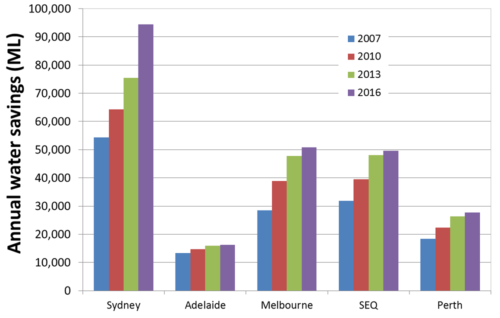


Figure 3: Annual water savings of water efficient appliances and rainwater harvesting from 2007 to 2016
Figure 3 demonstrates that building performance in Sydney is very different to Melbourne. Savings from water efficient appliances and rainwater harvesting generate 90 GL each year which is equivalent to the capacity of the Sydney desalination plant. Compliance in water savings is achieved through the BASIX State Environmental Planning Policy.
Figure 4 reveals that households in New South Wales use 40% less energy than household in Victoria.
Figure 5 demonstrates NSW has substantially decreased utility operating expenses in comparison to other regions (Coombes, Smit and MacDonald, (2016)). Related research shows that NSW has experienced over $4 billion cumulative benefits to date from the BASIX policy.
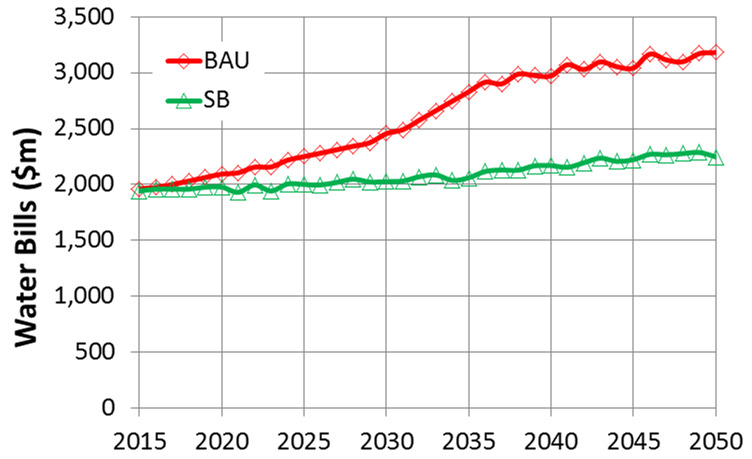

Figure 6: Future household expenses for utility water and sewerage services: Business as Usual vs Sustainable Buildings (2016 dollars)
Figure 6 demonstrates the sustainable buildings option improves household welfare by reducing household expenses for utility services by $1 billion/year in real terms. Net cumulative benefits of the sustainable buildings option across Melbourne are $16 billion to 2050 to households, utility and government.
Figure 7 illustrates a key concept for urban water security in Australia. Traditional water supply catchments stop harvesting water when average annual rainfall drops below about 500 mm in any year. Rainwater harvesting in urban areas continues to capture runoff in drought conditions, precisely when it is most needed (Coombes and Barry, 2008, The relative efficiency of water supply catchments and rainwater tanks in cities subject to variable climate and the potential for climate change, Australian Journal of Water Resources, 12 85-100)
[1] Coombes P.J., and Barry M.E (2015), A Systems Framework of big data for analysis of policy and strategy”, 2015 WSUD & IECA Conference. Engineers Australia. Sydney.
[2] http://www.apra.gov.au/Speeches/Pages/Australias-new-horizon.aspx

